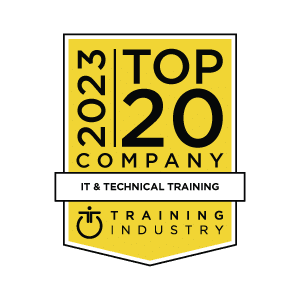This course is designed to teach you how to use z/OS Job Control Language (JCL) and selected z/OS utility programs in an online batch environment. Both Storage Management Subsystem (SMS) and non-SMS JCL are discussed. Machine lab exercises complement the lecture material.
-
This course is designed to provide the SMP/E skills needed in the installation and maintenance of optional features and maintenance in the z/OS operating environment. You are taught to define the SMP/E database and invoke SMP/E to add, modify, or replace system elements. The course includes extensive hands-on labs using a current level of SMP/E.
You will get practical experience in the SMP/E tasks involved in installing a z/OS product. Emphasis is on interpreting results of SMP/E processing. SMP/E concepts examined in this course include modification control statements, the consolidated software inventory, zone structure, and error analysis. SMP/E commands such as RECEIVE, APPLY, ACCEPT, RESTORE, REPORT, and LIST are discussed.
You will also learn how to perform automated SMP/E delivery of z/OS and product maintenance over the Internet with an automated SMP/E process that downloads and installs IBM preventive and corrective service over the Internet.
-
To provide an overview of the z Operating System (OS), look at the systems from both a hardware and software prospective, and develop a basic understanding of System z partitioning capabilities, Processor Resource/Systems Manager (PR/SM), z/OS, Job Entry Subsystem 2 (JES2), Job Entry Subsystem 3 (JES3), Time Sharing Option (TSO), TSO Extended (TSO/E), System Display and Search Facility (SDSF), z/OS Communications Server, and System z channel subsystem usage for various channels, such as Enterprise System Connection (ESCON), Fiber Connector (FICON), and the Open Systems Adapter (OSA). It will also describe the Initial Program Loader (IPL) process and enable you to become comfortable issuing z/OS commands from a Multi Console Support (MCS) system console or extended MCS console.
-
System z continues to extend the value of the mainframe by leveraging robust security solutions to help meet the needs of today’s on demand, service-oriented infrastructures. System z servers have implemented leading-edge technologies, such as high-performance cryptography, multi-level security, large-scale digital certificate authority and life cycle management, improved Secure Sockets Layer (SSL) performance, advanced Resource Access Control Facility (RACF) function, and z/OS Intrusion Detection Services. This advanced z/OS security course presents the evolution of the current z/OS security architecture and explores in detail the various technologies involved in z/OS Cryptographic Services, z/OS Resource Access Control Facility (RACF), and z/OS Integrated Security Services.
In the hands-on exercises, you begin with your own z/OS HTTP Server in a TCP/IP environment. Throughout the exercises, you make changes to the configuration to implement authentication by using RACF, SSL and the use of digital certificates. Use is made of facilities such as RACDCERT to manage digital certificates, PKI Services and RACF auto registration. You will also implement different scenarios to implement ssl security for a typical tcpip application; FTP: SSL, TLS, server authentication, client certificates and AT-TLS. These exercises reinforce the concepts and technologies being covered in the lectures.
-
Organizations are compelled to find effective and cost-efficient data security solutions.
Encryption is one of the technologies that enables organizations to reduce the cost, impact and even likelihood of a breach. Encrypting data can help companies meet the stringent mandates of the GDPR, HIPAA and other mandates.
IBM z14 has been designed for pervasive encryption, enabling organizations to encrypt 100% of an organizations IBM Z critical business data in-flight and at-rest, with no application changes and no impact to SLAs. Encrypting only the data required to meet compliance mandates should be considered a minimum threshold, not a best practice. IBM z14 makes pervasive encryption the new standard in data protection and the foundation of a larger data security and protection strategy.
z/OS is designed to provide new policy-based encryption options that take full advantage of the improvements in the z14 platform. These new capabilities include:
- Data set encryption, which is one aspect of pervasive encryption, provides enhanced data protection for many z/OS data sets gives users the ability to encrypt data without needing to make changes to applications to embed encryption APIs within applications.
- New z/OS policy controls which make it possible to use pervasive encryption to protect user data and simplify the task of compliance for many z/OS data sets, zFS file systems, and Coupling Facility structures.
- Pervasive encryption for IBM Z is a consumable approach to enable extensive encryption of data in-flight and at-rest to substantially simplify encryption and reduce costs associated with protecting data.
- In this course you will learn how to implement Pervasive Encryption in your z/OS installation. The course explores in detail, the various technologies that are involved in z System and z/OS Cryptographic Services, ICSF, RACF and DFSMS access method Services.
- In the hands-on exercises, you begin with the setup of your hardware crypto environment (CCA crypto express and CPACF), then you will load and activate your AES master keys, setup ICSF and its Key datasets (CKDS PKDS TKDS), then define your data encryption keys, activate your data set encryption policy, and encrypt your data sets and zFS file systems.
- These exercises reinforce the concepts and technologies being covered in the lectures.
-
This three-day FDTBF: Fintech and Digital Transformation in Banking and Finance course aims to provide finance professionals with a solid foundation in the rapidly changing world of fintech and digital banking. FinTech, short for financial technology, refers to an emerging financial services sector that is fast becoming indispensable to financial institutions and is constantly impacting the way we view and execute financial transactions.
This course will be pivotal in helping participants grasp the basics of fintech, navigate the mechanisms that facilitate it and comprehend the inevitably complex issues and intricacies that it brings.
Benefits of the workshop are:
- Understand the technologies that are impacting the economy, especially banking
- Theoretical understanding of artificial intelligence (AI), the blockchain and Internet of Things (IoT) within FinTech
- Broad applications grasp of technical/process solution to existing pain points
- Develop business use case to develop/improve a new/existing product
- Develop a competitive corporate strategy through innovative thinking
- Significantly reduce business costs and improve efficiencies
-
This course is designed to introduce students to IBM Data Science Experience. The course covers how to create and set up a project and to be familiar with how to create, code, collaborate, and share notebooks while working with a variety of data sources to analyze data.
If you are enrolling in a Self Paced Virtual Classroom or Web Based Training course, before you enroll, please review the Self-Paced Virtual Classes and Web-Based Training Classes on our Terms and Conditions page, as well as the system requirements, to ensure that your system meets the minimum requirements for this course.
-
The course also provides an overview of IPv6 technologies; covers IPv6 design and implementation; describes IPv6 operations, addressing, routing, services, and transition; and describes deployment of IPv6 in enterprise networks as well as in service provider networks. The course also includes case studies that are useful for deployment scenarios and remote labs.
-
This course teaches developers, database administrators, and system programmers various features of SQL, including column functions, grouping, unions, subqueries, and maintaining data.
Note: Guided eLearning is a self-paced offering which includes web-based content for self-study and videos (including audio) that demonstrate activities.
If you are enrolling in a Self Paced Virtual Classroom or Web Based Training course, before you enroll, please review the Self-Paced Virtual Classes and Web-Based Training Classes on our Terms and Conditions page, as well as the system requirements, to ensure that your system meets the minimum requirements for this course.
-
This offering teaches cloud database support staff how to manage access of users and privileges to a dashDB for Analytics or dashDB for Transactions database.
Note: Guided eLearning is a self-paced offering which includes web-based content for self study and videos (including audio) that demonstrate the hands-on activity.
If you are enrolling in a Self Paced Virtual Classroom or Web Based Training course, before you enroll, please review the Self-Paced Virtual Classes and Web-Based Training Classes on our Terms and Conditions page, as well as the system requirements, to ensure that your system meets the minimum requirements for this course. http://www.ibm.com/training/terms
-
This course is intended for Developers, Database Administrators, and System Programmers who require further insight into the SQL language.
Note: Guided eLearning is a self-paced offering which includes web-based content for self-study and videos (including audio) that demonstrate activities.
If you are enrolling in a Self Paced Virtual Classroom or Web Based Training course, before you enroll, please review the Self-Paced Virtual Classes and Web-Based Training Classes on our Terms and Conditions page, as well as the system requirements, to ensure that your system meets the minimum requirements for this course.




